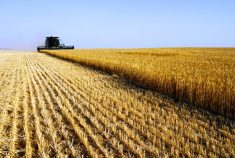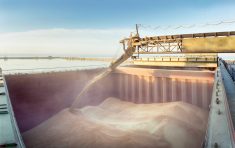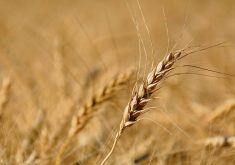Chicago | Reuters — The earliest reports from the start of the U.S. hard red winter wheat harvest underscored industry fears of a second straight year of low protein, a factor that shifts the market’s focus to prospects for the North American spring wheat crop, a higher-protein variety.
“It’s probably a foregone conclusion at this point. It seems like it’s going to be more across-the-board low protein,” Halo Commodities analyst Tregg Cronin said of the hard red winter (HRW) wheat crop.
Protein content is one indication of wheat’s quality, and wheat with higher levels commands a higher price.
Read Also

Brazil to reap record soy crop in 2025/2026, increase exports
Brazil’s Conab said the country will reap a record soybean crop of 177.6 million tons in the 2025/2026 harvest year, according to data released on Thursday.
Plains Grains Inc., an industry group that conducts weekly tests of HRW wheat during harvest, said on Friday that the average protein content of its first 14 samples was 10.6 per cent, down from last year’s historically low final average of 11.2 per cent.
Plains Grains expects to test more than 500 wheat samples over the course of the harvest, and it cautioned that the initial number of samples “may or may not reflect the overall crop.”
Along with excessive moisture that tends to lower protein content, crop experts also point to record yields in Kansas and Oklahoma last year that left soils drained of nutrients. And low wheat prices discouraged farmers from spending money to replenish the soil with nitrogen fertilizer, a common protein-booster.
Cash and futures prices for wheat are already factoring in a low-protein winter wheat crop. The expectations lifted the premium for spring wheat futures on the Minneapolis Grain Exchange over mid-grade K.C. HRW wheat futures on Tuesday to US$1.34 per bushel, the biggest since January.
Within the Kansas City cash market, offers for HRW wheat with 12 per cent protein reached US$1.08 a bushel above offers for 11 per cent wheat last week, the widest spread between those grades since 2008.
“It is premature to say this crop is low protein. But I’ll tell you what, it looks like it’s not going to be great protein because we’ve just had too much rain,” said Frank Stone, president of the Kansas City Trading Group, a brokerage.
Mike Schulte, executive director of the Oklahoma Wheat Commission, said on Friday that recent reports were more encouraging.
“There have, in the last day or two, been some proteins as high as 13 in southwest Oklahoma, so maybe it will get a little bit better.”
Spotlight on spring wheat
Problems with the HRW harvest thrust high-protein spring wheat, grown in the northern U.S. Plains and Canada, into the spotlight.
Millers have been adding large amounts of high-priced spring wheat to their flour blends, and that trend will continue if protein remains low in this year’s HRW harvest, Stone said.
U.S. farmers are finishing spring wheat planting, with 90 per cent seeded by May 21, while rains have slowed progress in Canada.
Despite the bull market for protein, northern farmers are reluctant to add more spring wheat acres because other crops, including soybeans and corn, are still more profitable.
“No one is inspired to plant spring wheat,” Cronin said, adding, “That window has kind of passed.”
— Julie Ingwersen is a Reuters correspondent covering grain markets from Chicago.














